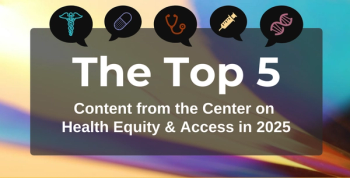
For Cell and Gene Therapies, MCDA Holds Promise for Improving Equity in Value Assessment
Assessing the value of novel therapies has been challenging and controversial using existing methods, pointing to the need for continued exploration of new approaches.
Innovative cell and gene therapies are on the horizon, many with the potential to transform the lives of patients with serious diseases. In a world of finite resources, it is imperative to understand the true value of these therapies to different stakeholders so that their full benefit is realized and patient care is optimized, while costs are also contained. However, assessing the value of these novel therapies has been challenging and controversial using existing methods, pointing to the need for continued exploration of new approaches.
Standard Methods Limit Our Understanding
For the past 30 years, the
These limitations become even more pronounced when applied to transformative therapies such as cell and gene therapies. While some researchers have begun to explore ways to use an “augmented” QALY, this presents challenges as well. Meanwhile, cell and gene therapies offer patients newfound hope and pave the way for additional scientific discoveries and truly personalized care—2 factors the QALY is largely unable to incorporate. This means the method risks underestimating the true value of cell and gene therapies.
MCDA: One Promising, Alternative Approach
There is emerging interest in alternative value assessment methodologies, including
The use of MCDA can potentially allow for a more comprehensive assessment of cell and gene therapies as such methods can take into account patient goals and priorities for care, disease severity, societal preferences, and other novel value elements.
MCDA also better reflects the way complex decisions are made in everyday life and provides a
Lastly, MCDA can be particularly helpful when making decisions around transformative
Formalized MCDA techniques are emerging, and Health Technology Assessment (HTA) agencies have begun to pilot their use, with promising results. For example, in 2010, the German Institute for Quality and Efficiency in Health Care initiated successful workshops to trial 2 potential methods for eliciting stakeholder preferences in the MCDA framework. The trials were a success, with researchers concluding that their techniques could be used to support the value assessment process.
As a nonprofit laboratory for improving methods and resources used for value assessment, the
As an emerging framework, questions around best practices in MCDA naturally remain. Concerns
It is equally important that such concerns do not become a barrier (or worse, a justification) to slow the continued exploration of novel approaches, such as MCDA. Cell and gene therapies offer promise for many stakeholders. Patients hold hope that these therapies can transform their lives. Providers and payers are eager for these therapies to produce durable clinical outcomes. Society at large stands to gain from the increased productivity of treated patients and the potential for further innovation and scientific breakthroughs. It is vital that our methods for considering the value of medical interventions can account for these additional dimensions. MCDA has real potential as a more thorough and equitable method for future value assessment.
Reference
1. National Council on Disability. Quality-adjusted life years and the devaluation of life with disability: Part of the bioethics and disability series. November 6, 2019. Accessed July 16, 2020.
Newsletter
Stay ahead of policy, cost, and value—subscribe to AJMC for expert insights at the intersection of clinical care and health economics.








































